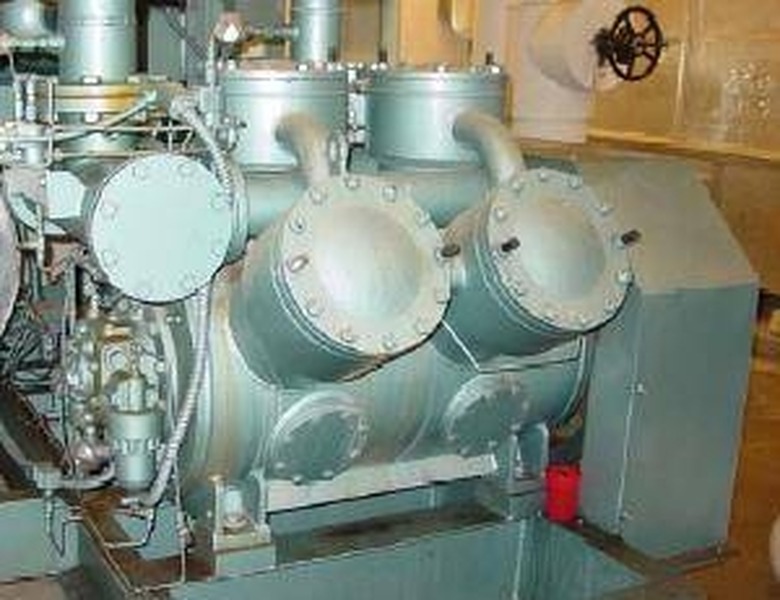How Does A Reciprocating Compressor Work?
Basics of a Compressor
Basics of a Compressor
A compressor increases the pressure of a gas. It reduces the volume of the gas and increases its density without turning that gas into a liquid. Compressors can do this in a number of ways. However, the commonality between all compressors is the fact that they all use some sort of fuel, such as gasoline or electricity, to power whatever compression method they use. Also, because the compressor increases the pressure on the gas, it increases the temperature of the gas. Many other types of compressors are used for various chemicals and fuels that require compression.
Components of a Reciprocating Compressor
Components of a Reciprocating Compressor
A reciprocating compressor uses pistons to compress air. The compressor has a similar design to an internal combustion engine; it even looks similar. There is a central crankshaft that drives anywhere from two to six pistons inside cylinders. The crankshaft is generally driven by an external motor. This motor can be electric or internal combustion. However, it determines the total horsepower of the compressor.
Compressing the Gas
Compressing the Gas
As the pistons draw back, gas is injected from an intake valve in the compressor. This gas is injected into the cylinders of the pistons, and is then compressed by the reciprocating action of the pistons. The gas is then discharged either to be used immediately by a pneumatic machine, or stored in compressed air tanks. However, the gas must be stored or used directly from the compressor to prevent it from losing its pressurization.
Cite This Article
MLA
Scott, David. "How Does A Reciprocating Compressor Work?" sciencing.com, https://www.sciencing.com/reciprocating-compressor-work-5002827/. 24 April 2017.
APA
Scott, David. (2017, April 24). How Does A Reciprocating Compressor Work?. sciencing.com. Retrieved from https://www.sciencing.com/reciprocating-compressor-work-5002827/
Chicago
Scott, David. How Does A Reciprocating Compressor Work? last modified March 24, 2022. https://www.sciencing.com/reciprocating-compressor-work-5002827/
